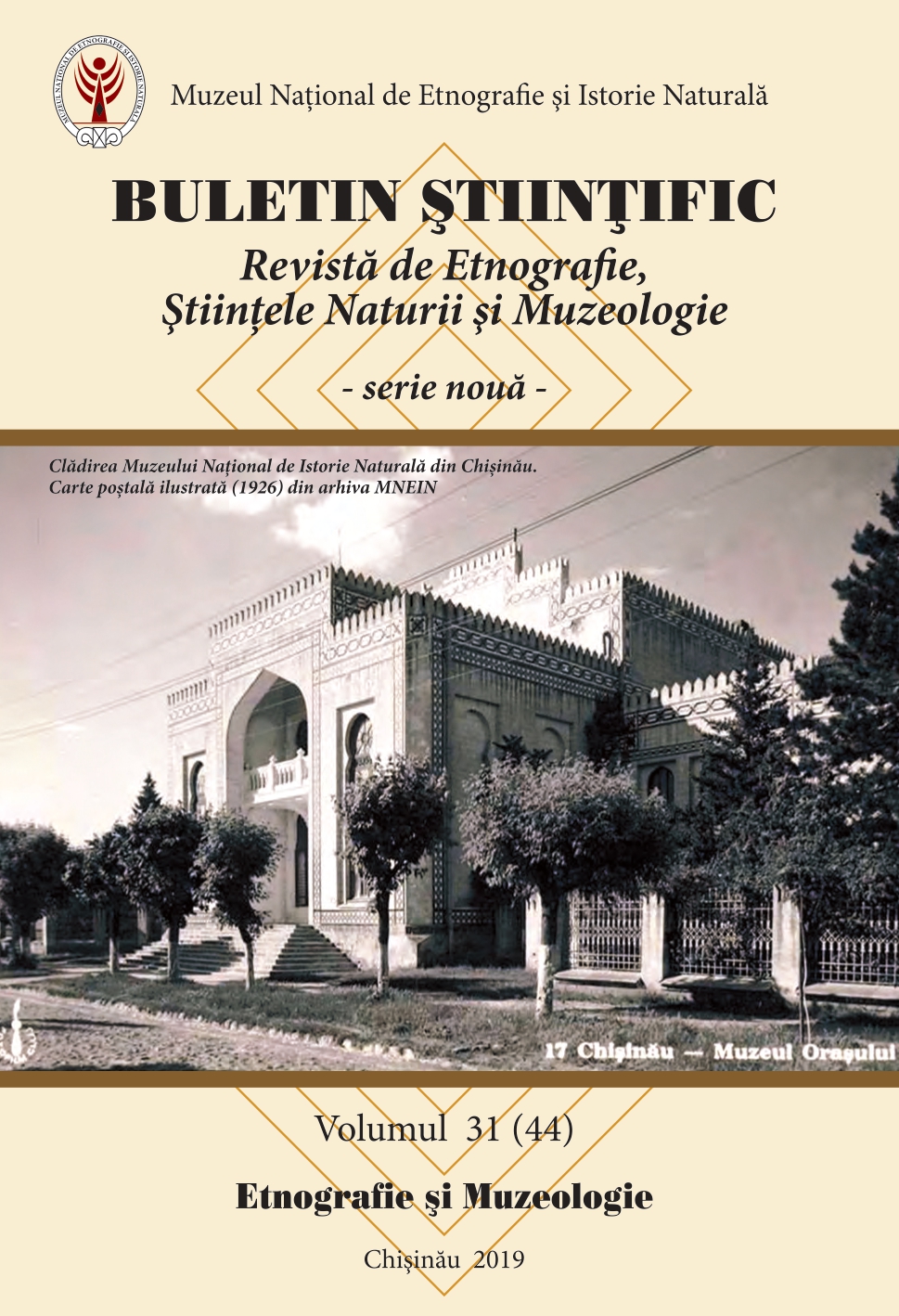Scrânciobul pascal – obicei al românilor, în amintirile bătrânilor și în creații literar-artistice (sec. XIX-XXI)
The Easter swing – a Romanian tradition reflected in the memories of old people and in the literary-artistic creations (XIX-XXI c.)
Author(s): Silvia ChirilăSubject(s): Cultural history, Customs / Folklore, Poetry, Ethnohistory, Cultural Anthropology / Ethnology
Published by: Muzeul Național de Etnografie și Istorie Naturală
Keywords: swing;hora;Romanian space;popular clothing;Easter eggs;
Summary/Abstract: The swing has more definitions, forms and meanings linked with human existence, and it is common for different civilizations. The tradition of Easter swing was practiced in Romanian space, both in towns and in villages. Being installed in the center of locality, in open place, the massive wooden swing, with four or more chairs, attracted the whole community, especially young lovers – all wearing folk dress. Old people remember that they paid Easter eggs or money for swinging. Around the swing, the musicians were playing traditional instruments, while the villagers were dancing the traditional round dance Hora; in towns, the parties were completed with gambles, theatrical performances and other types of fun. Poets, writers, foreign travellers from XIX-XXI century (Vasile Alecsandri, Rudolf Șuțu, Dumitru Matcovschi, Lidia Grosu Gonța) wrote about the most spectacular Easter swings and Hora; and the joy of the community was painted by numerous Romanian artists from both banks of Prut river (Ștefan Luchian, Theodor Aman, Pan Pandele Ioanid, Ion Cârchelan). Even if the tradition of Easter swing was interrupted by the soviet regime installed in Bassarabia in 1940, today, fortunately, this custom revives in some localities, and it deserves to be promoted.
Journal: Buletin Științific. Revistă de Etnografie, Științele Naturii și Muzeologie
- Issue Year: 31/2019
- Issue No: 31
- Page Range: 96-111
- Page Count: 16
- Language: Romanian

